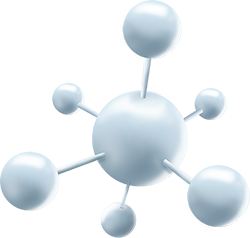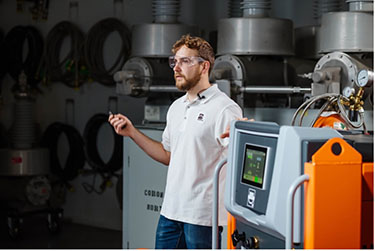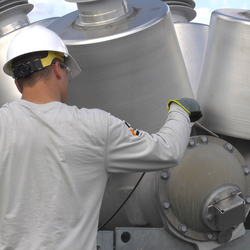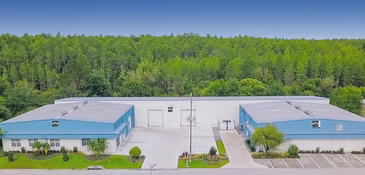
Author: Billy Lao, General Manager for DILO Company, Inc. and DILO Direct
As we slowly move towards alternatives for SF6 gas Insulated Equipment (GIE) applications, I am challenged to do my part to provide the best recommendations as an industry veteran who “grew-up” around the SF6 gas world. I feel it has been a journey already and yet there are many more miles to go.
SF6 gas has been the go-to solution for GIE since the true applications, which were being instituted via patents in the early 1950’s. Of course, other insulation mediums such as air and oil were being used and, in some cases, are still used today for a number of reasons. SF6 gas GIE truly changed the industry from how we designed substations, how we maintained equipment to how we trained and educated our field teams. But that is a blog post for another day! Today we will talk about what the current SF6 gas regulation and legislation mean for businesses today and in the near future.

SF6 is extremely effective at quenching arcs due to its strong molecular bonds, making it an ideal gas to use in switchgear; However, the high Global Warming Potential (GWP) of 22,500 with a lifetime 3,500 years in the atmosphere led to the realization that we need alternative solutions. Over the course of 10 years, OEMs and other stakeholders in the industry have invested heavily in R&D for alternatives to SF6 gas. Today, those looking to move away from SF6 have many different options on the marketplace. At the same time, existing SF6 switchgear has a long lifespan and will remain in use throughout the industry for the foreseeable future.
So, where does this take us? Well, it takes us to the level of reporting that goes beyond just knowing what you have for installed gas in GIE. It requires true accountability of the gases that are being used, emissions that are released and the management of all these gases to ensure that the path forward is for the betterment of our environment. Not only is this the right thing to do, but many in the industry are or will soon be required to do so.
Important Federal and State SF6 Gas Regulations and Legislation (UPDATED 2022)

CARB Regulatory Update
CARB has formally released the latest Green House Gas reporting requirements for SF6 gas and SF6 gas alternatives. The newly released regulation includes a requirement for owners of GIE to report on both SF6 gas and SF6 gas alternatives usage and emissions.
The update of the regulation includes (but is not limited to) the following:
- Process for reporting
- Updated definitions
- Update on the process to account for nameplate discrepancies
- The exclusion (removal) of the target emissions table that included emissions to be 1% or less by 2020
- SF6 gas phase out schedule
- Emergency event exemption
- Annual emission limits with formulas and calculations, including (but not limited to):
- calculating average system capacity, for each covered insulating gas for the specific data year, calculate their average CO2e capacity on an annual basis as follows for each covered insulating gas
- calculating average CO2e capacity on an annual basis for each covered insulating gas
- an “Early Action Credit” (EAC)
Overall, the new standards of reporting are certainly more involved which of course ties into other plant, station, or entity GHG emissions produced during the course of production of electricity or managing electrical grids.
How will regulations for SF6 and alternative gases affect the industry?
What does all this mean for owners of GIE in CA? It means training, investments, and a lot of patience as field crews, engineering design departments, warehousing management, purchasing departments and several other departments for the owner entities to slowly transition to SF6 gas alternatives.
Outside of California, there is no direct impact at this time. It is crucial for all GIE owners to consider the importance of accountability as the EPA, environmental agencies across a number of states, and local city and county governments are reviewing what the new CARB regulation is as well as how it works for the benefit of GHG emission reductions.
The future of GHG regulations and reporting, coupled with many of our current events occurring around the globe are impacting the future of how we do business with regards to SF6 gas and SF6 gas alternatives. It is important that we ensure we put processes into place that will support emission reductions. In addition, placing programs that include accountability of SF6 gas and SF6 gas alternatives (i.e. reporting) even if it is only for the benefit of internal accounting.
Reducing Greenhouse Gas Emissions is The Main Goal

The reductions in GHG emissions must occur not only locally (at the substation or the GIE), but they must also occur globally. Implementing programs such as Recover, Recycle, Reuse (the 3 R’s) and purchasing programs to acquire certified reconditioned gas (i.e. DILO Certified SF6 Gas) by tapping into the hundreds of thousands of pounds of SF6 gas already in North America are steps to support local and global emission reductions.
Coupling those programs with transition plans for green-field and brown-field projects which includes SF6 gas alternatives (i.e. C4 and C5 SF6 Gas Alternatives), will ensure a safe and sustainable planet for our not only our future but also that of our children.
But this all must start at the top and work its way down. Owners, top organizational managers, and field management teams must review their current processes on accountability and gas handling training to quickly begin the turn towards SF6 gas emission reductions. The quickest way to do this is to transition their entity to a program that includes internal accountability for GHG emissions.
One Vision. Zero Emissions.
DILO Company Inc. and DILO Direct are prepared to support the T&D industry in reducing and tracking emissions as well as transitioning to alternative gases. DILO is prepared for the transition to alternative gases and has a full alternative gas handling product line in place for the emission free handling of gas mixtures on the basis of C4-FN or C5-FK.
One of the best defenses against SF6 emissions is well-trained technicians. DILO offers accredited and customizable SF6 Safety and Handling Trainings that help gas users implement a zero-emissions approach to gas handling. We also offer a variety of emission-free on-site SF6 gas handing services through our service division, DILO Direct. Our cloud based SF6 monitoring and reporting software, Direct Track, helps utilities manage their SF6 inventory and is compliant with local and federal reporting requirements.

DILO Company is at the forefront for promoting responsible gas handling in the industry, but we cannot do it alone. Utilities and GIE owners must be the true stakeholders to make changes in gas handling today to make a positive impact for tomorrow. Taking the time to become informed is the first step. Tune into NEMA’s Free “Exploratory Projects for SF6 Alternative Technologies” Webinar on March 28 at 3:30 p.m. to learn more about alternatives to SF6 gas.
Do you have more questions? We are here to help.




